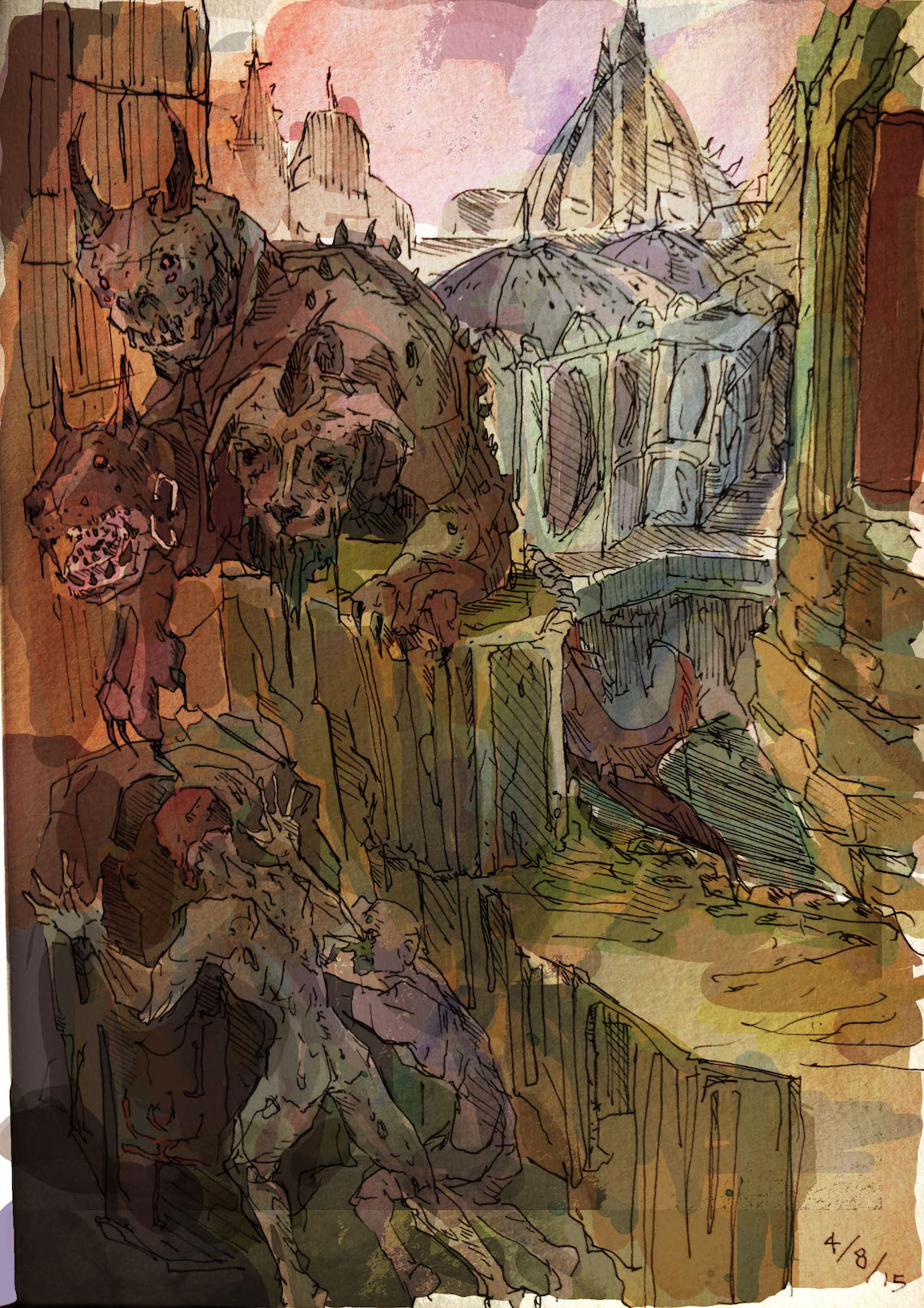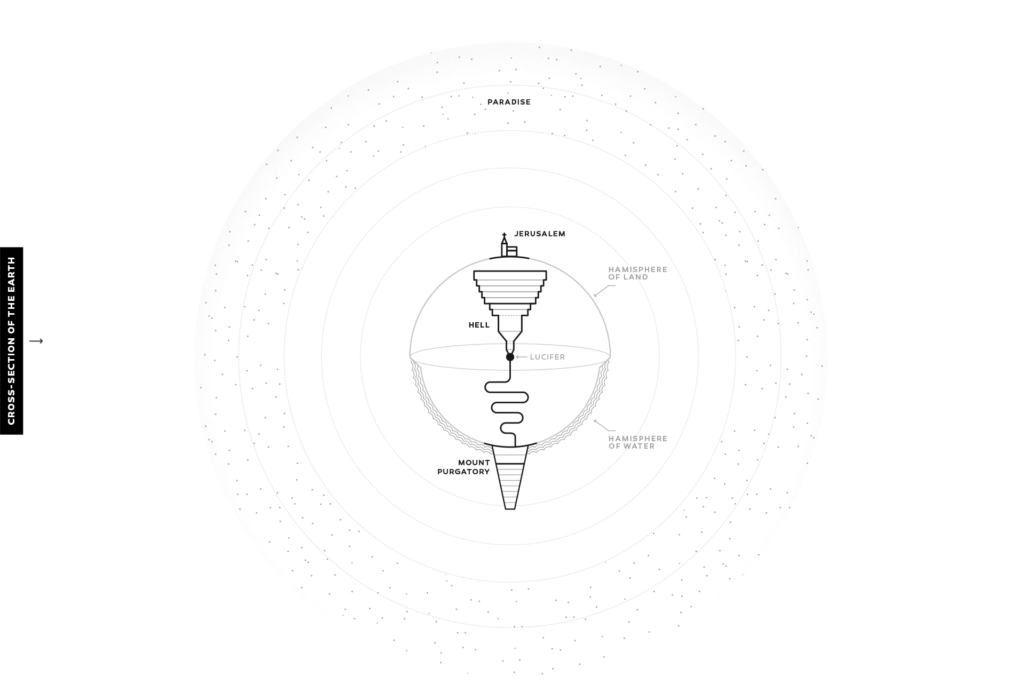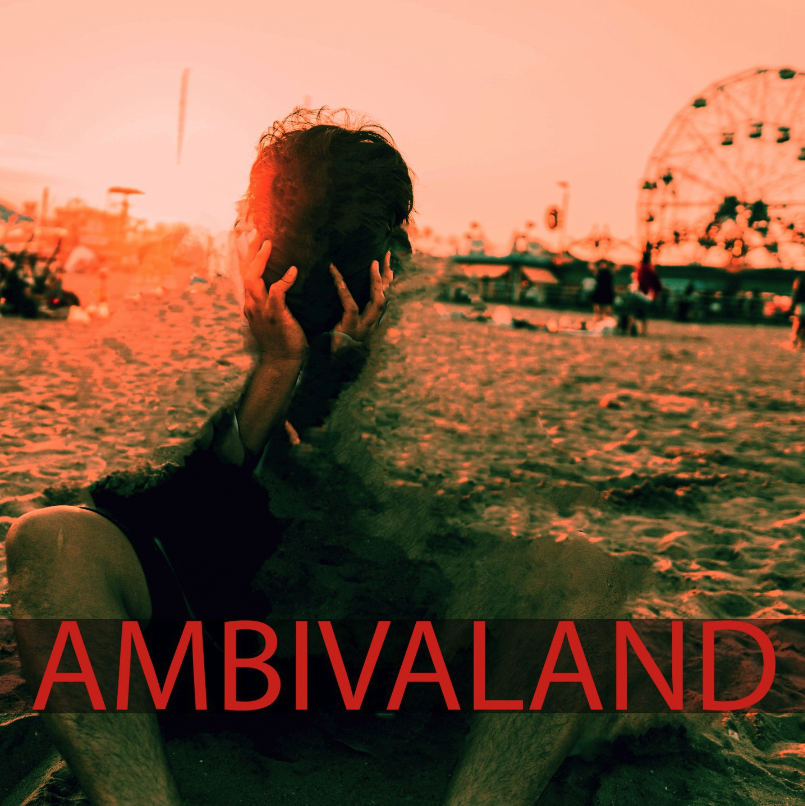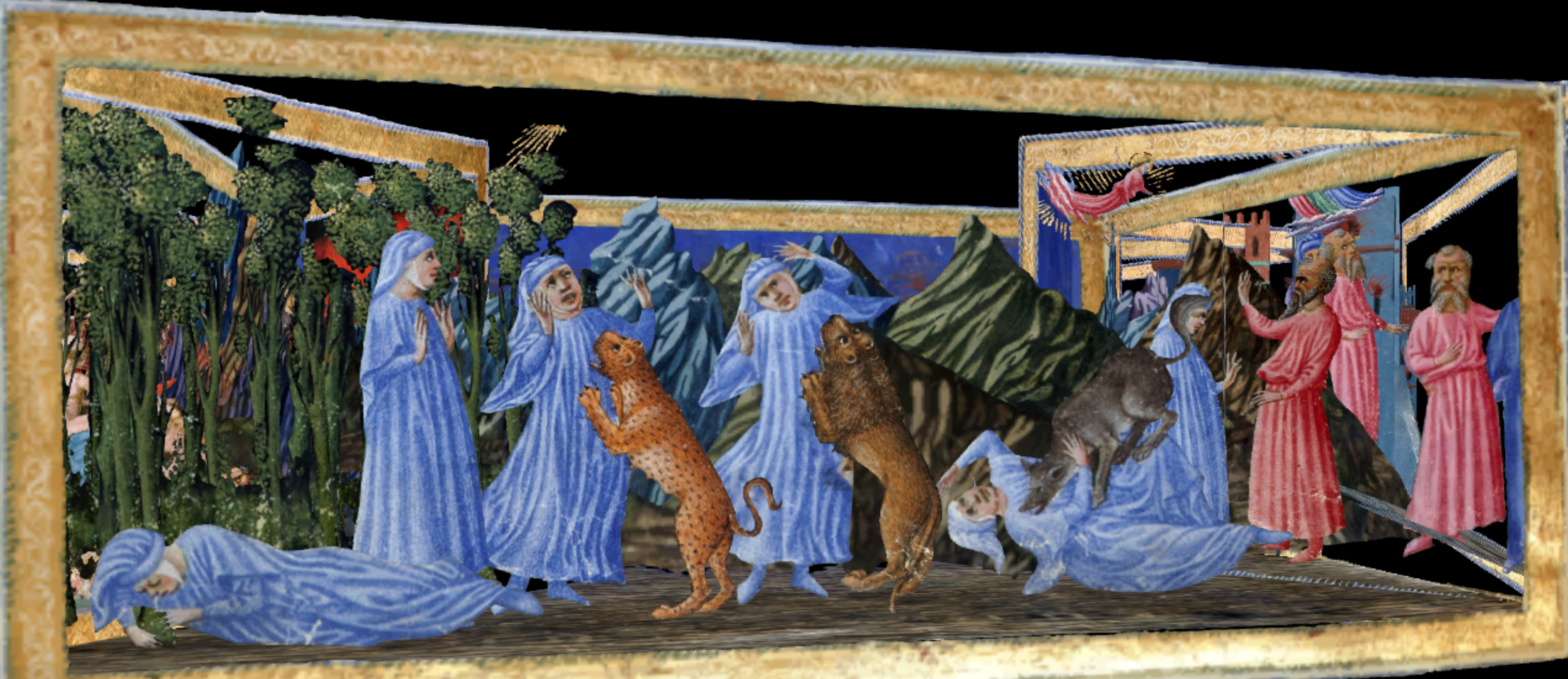Monaramis’s depictions of Dante Alighieri’s Inferno feature an array of muted colors that stem from an earthy palette. These are layered over the black contour of the scene (which appears to have been drawn by hand). The composition focuses on Cerberus as it imposes over a historical monument, seemingly intent to sniff out the two figures hiding in the foreground. The line-work of this piece is sketchy and heavily gestural, which reinforces the dynamism of the Canto depicted. — Monaramis Art, “Dante’s Inferno— La Divina Commedia,” Behance, 2015 (Retrieved March 28, 2024).
“And the Love That Moves the Sun and Other Stars…,” Michelle Marie
Graphic artist and owner of the blog Tell Me About It draws inspiration from the famous last line of Paradiso, and therefore The Divine Comedy—Michelle Marie (username MICHELLEMARIE), “And the Love That Moves the Sun and Other Stars…,” Tell Me About It, January 17, 2015 (Retrieved February 29, 2024)
Infographic Illustration of The Divine Comedy
“Dante’s Divine Comedy’s fourth full translation to Hungarian was created by Adam Nadasdy, as a result of eight years of research a modern and clear translation was created just as Dante’s original work in his own time. I was asked to create infographics to the book. My goal was to create clean, minimalistic and accurate illustrations so that the readers will be able to understand the different locations and Dante’s path – Hell, Purgatory and Paradise.” —Janos Baksa, Adobe Behance, June 2, 2016 (retrieved on February 29, 2024)
Further illustrations of each circle, terrace, and heaven can be found here
Kat Mustatea, Ambivaland (2023)
Kat Mustatea’s follow-up to Voidopolis , which was just released as an augmented reality book by MIT Press. Ambivaland traces the narrative of Dante’s Purgatorio, with new constraints and algorithms. See her postings on Instagram.





